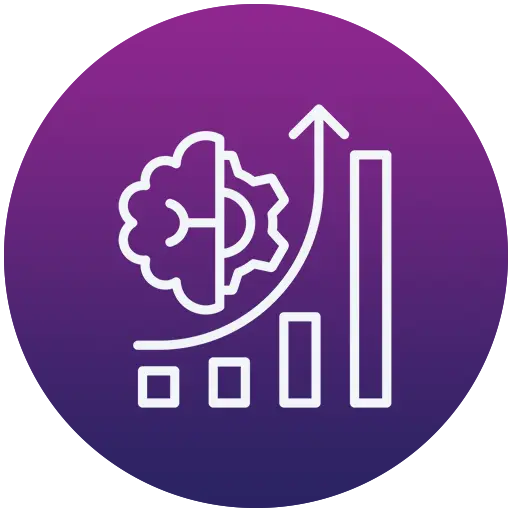
12 August 2023

Agile Transformation in a Technology Startup: Navigating Rapid Growth and Innovation
1 December 2023Precision Agriculture: IoT Applications in Modern Farming
Introduction
In the ever-evolving landscape of agriculture, the integration of Internet of Things (IoT) technologies has ushered in a new era of precision farming. This case study delves into the transformative impact of IoT applications in modern farming, exploring real-world examples that highlight how precision agriculture is revolutionizing traditional farming practices.
Background
Modern agriculture faces the challenge of feeding a growing global population while optimizing resource use and minimizing environmental impact. Precision agriculture, enabled by IoT technologies, seeks to address these challenges by leveraging data-driven insights for more efficient and sustainable farming.
The Challenge
Increasing Pressure on Agricultural Resources
Traditional farming methods often involve blanket approaches to irrigation, fertilization, and pest control, leading to inefficient resource use. With the global population expected to reach 9 billion by 2050, there is a pressing need for more targeted and sustainable agricultural practices.
Limited Visibility and Decision-Making Tools
Farmers face challenges in gaining real-time visibility into crop conditions, soil health, and weather patterns. Lack of accurate and timely information hinders their ability to make informed decisions, resulting in suboptimal yields and increased operational costs.
The Solution
Precision Agriculture Through IoT
To address these challenges, farms worldwide are embracing precision agriculture, leveraging IoT applications to collect and analyze data for more informed decision-making. The integration of sensors, drones, and data analytics enables farmers to monitor and manage their fields with unprecedented precision.
Key IoT Applications
1. Sensor-Based Monitoring
- Implementation: Deploying soil moisture sensors, weather stations, and crop health sensors.
- Benefits: Real-time monitoring of soil conditions, crop growth, and weather parameters.
2. Precision Irrigation
- Implementation: IoT-enabled smart irrigation systems with soil moisture feedback.
- Benefits: Optimized water usage, reduced water wastage, and improved crop yields.
3. Smart Pest Management
- Implementation: IoT-based pest monitoring using sensors and drones.
- Benefits: Early detection of pest infestations, targeted pesticide application, and reduced environmental impact.
4. Data-Driven Crop Planning
- Implementation: Integrating historical data, weather forecasts, and soil analysis.
- Benefits: Informed decision-making on crop selection, planting times, and optimal harvest periods.
5. Automated Machinery and Robotics
- Implementation: IoT-enabled tractors and machinery with GPS and automation capabilities.
- Benefits: Increased efficiency, reduced labor costs, and precise field operations.
Implementation Process
Phase 1: IoT Infrastructure Setup
In the initial phase, the farm invested in establishing the necessary IoT infrastructure. This included the installation of soil sensors, weather stations, and a central data hub for collecting and processing information. The goal was to create a connected ecosystem that could provide real-time insights.
Phase 2: Smart Irrigation System Implementation
Recognizing the significance of water conservation, the farm implemented a smart irrigation system. Soil moisture sensors were strategically placed throughout the fields, and the irrigation system was automated to deliver water precisely where and when it was needed. This not only optimized water usage but also led to healthier crops.
Phase 3: Pest Monitoring and Management
Recognizing the significance of water conservation, the farm implemented a smart irrigation system. Soil moisture sensors were strategically placed throughout the fields, and the irrigation system was automated to deliver water precisely where and when it was needed. This not only optimized water usage but also led to healthier crops.
Phase 4: Data Analytics for Informed Decision-Making
The farm leveraged data analytics tools to process the vast amount of information collected from sensors and drones. Historical data, weather forecasts, and soil analysis were integrated to provide actionable insights. This facilitated informed decision-making on crop planning, helping the farm optimize yields and resource utilization.
Phase 5: Automation of Farm Machinery
In the final phase, the farm introduced IoT-enabled automation in its machinery. Tractors were equipped with GPS technology for precise navigation, and automation capabilities allowed for optimized planting, harvesting, and field maintenance. This not only increased operational efficiency but also reduced labor costs.
The Results
Increased Crop Yields
The implementation of precision agriculture through IoT resulted in significantly increased crop yields. By providing crops with the right amount of water, nutrients, and protection against pests precisely when needed, the farm achieved higher productivity per acre.
Resource Efficiency and Cost Reduction
Precision agriculture led to a substantial reduction in resource usage. Water was conserved through targeted irrigation, and the optimized application of pesticides and fertilizers minimized waste. This not only reduced operational costs but also contributed to the farm’s sustainability goals.
Enhanced Sustainability
The farm’s adoption of precision agriculture aligned with broader sustainability objectives. By minimizing environmental impact through targeted interventions, the farm demonstrated a commitment to responsible and eco-friendly farming practices.
Data-Driven Decision-Making
Farmers gained access to a wealth of real-time data and insights, empowering them to make data-driven decisions. The ability to monitor and analyze field conditions allowed for proactive management, responding swiftly to changing circumstances and ensuring optimal crop health.
Improved Operational Efficiency
The automation of machinery and field operations led to improved operational efficiency. Tasks such as planting, harvesting, and field maintenance were executed with precision, reducing the need for manual labor and allowing farm personnel to focus on strategic decision-making.
Lessons Learned
Continuous Monitoring and Adaptation
Precision agriculture is an evolving field, and continuous monitoring and adaptation are crucial. The farm learned the importance of regularly updating and calibrating sensors, embracing new technologies, and staying informed about advancements in IoT applications for agriculture.
- Implementation: IoT-enabled smart irrigation systems with soil moisture feedback.
- Benefits: Optimized water usage, reduced water wastage, and improved crop yields.
Integration of Data Silos
Efficient data management is essential for the success of precision agriculture. The farm learned the importance of integrating data from various sources seamlessly. This required collaboration between different stakeholders and the adoption of interoperable technologies.
Conclusion
This case study illustrates how IoT applications in precision agriculture have transformed traditional farming practices. Through the strategic implementation of IoT technologies, including sensor-based monitoring, precision irrigation, and data-driven decision-making, the farm achieved higher yields, resource efficiency, and sustainability. The lessons learned from this case study can serve as a blueprint for other farms seeking to embrace precision agriculture and navigate the future of modern farming with technological innovation.









